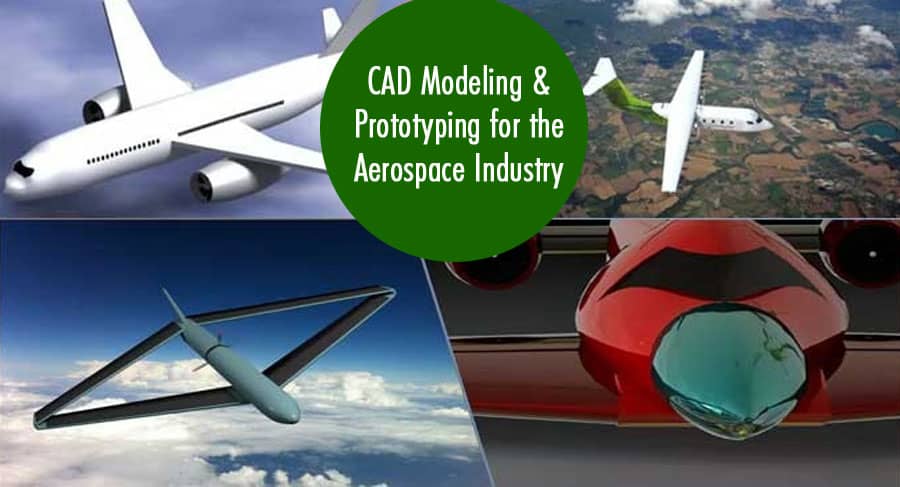In the ever-evolving world of aerospace engineering, precision and innovation are paramount. One of the crucial elements in the process of designing cutting-edge aircraft and spacecraft is CAD (Computer-Aided Design) modeling and prototyping.
Introduction to CAD Modeling
CAD modeling involves the creation of digital representations of physical objects, allowing engineers and designers to visualize, analyze, and refine their concepts. It’s the foundation upon which aerospace engineering advances, enabling professionals to bring their visionary ideas to life.
The Aerospace Industry’s Reliance on CAD
In the aerospace industry, where the stakes are sky-high, CAD modeling is indispensable. It serves as the backbone of aircraft and spacecraft design, ensuring every component aligns perfectly for optimal performance.
Benefits of CAD Modeling in Aerospace
Enhanced Precision: CAD modeling offers an unparalleled level of precision. Engineers can simulate real-world conditions and interactions, fine-tuning their designs with meticulous accuracy.
Cost Reduction: By identifying potential issues in the digital realm, costly mistakes in manufacturing are minimized. This results in substantial cost savings for aerospace companies.
Iterative Design: CAD enables engineers to iterate rapidly, making adjustments and improvements efficiently. This iterative approach leads to the development of highly efficient and safe aerospace vehicles.
Challenges Faced in CAD Modeling for Aerospace
Complex Geometries: Aerospace components often feature intricate and complex shapes. CAD systems must handle these intricacies while maintaining performance and stability.
Material Selection: Choosing the right materials for aircraft and spacecraft is crucial. CAD systems assist in analyzing material properties to ensure durability and safety.
Regulatory Compliance: Strict regulations govern the aerospace industry. CAD modeling tools assist in adhering to these standards, guaranteeing the airworthiness and safety of vehicles.
The Role of Prototyping
Prototyping bridges the gap between the digital and physical worlds. It allows engineers to test and validate their designs before mass production.
Rapid Prototyping Techniques
3D Printing: Additive manufacturing, or 3D printing, has revolutionized prototyping. It enables the creation of intricate prototypes quickly and cost-effectively.
CNC Machining: Computer Numerical Control (CNC) machining is another vital prototyping technique. It produces high-precision parts, essential for aerospace applications.
Stereolithography: Stereolithography uses a laser to solidify liquid resin layer by layer, creating precise prototypes with exceptional surface finish.
The Synergy of CAD and Prototyping
The integration of CAD modeling and prototyping streamlines the design process. Engineers can make real-time adjustments and improvements, leading to faster development cycles.
Aerospace Innovations Powered by CAD
Next-Gen Aircraft Designs: CAD modeling has facilitated the creation of futuristic aircraft with reduced fuel consumption, increased passenger comfort, and improved safety.
Spacecraft Development: Space agencies worldwide rely on CAD modeling to design spacecraft for exploration, satellite deployment, and planetary missions.
Future Trends in CAD and Prototyping
The future of CAD modeling and prototyping in aerospace looks promising. AI-driven design optimization and advanced materials will play pivotal roles in shaping the industry.
Conclusion
CAD modeling and prototyping are the cornerstones of innovation in the aerospace sector. They enhance precision, reduce costs, and accelerate development, ensuring that the sky is not the limit but the beginning.
FAQs
Can CAD modeling be used for both military and civilian aerospace projects?
Yes, CAD modeling is versatile and is used extensively in both military and civilian aerospace projects to design aircraft, satellites, and more.
What are the most commonly used materials in aerospace prototyping?
Aerospace prototypes are often made from materials like titanium, aluminum, and composite materials for their strength-to-weight ratios.
How does CAD modeling contribute to environmental sustainability in aerospace?
CAD modeling aids in designing more fuel-efficient aircraft, reducing emissions and environmental impact.
Are there any open-source CAD modeling tools available for aerospace enthusiasts?
Yes, open-source CAD tools like FreeCAD and Blender are popular choices for aerospace hobbyists.
What is the typical timeline for developing a new aerospace vehicle using CAD modeling and prototyping?
The timeline varies but can range from a few months for smaller projects to several years for complex aircraft or spacecraft.


